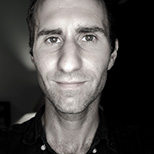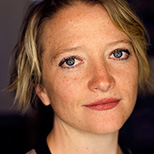May 22, 2015 — The small village of Selkie, located in southeastern Finland just 50 miles (80 km) from the Russian border, was the latest stop for the Our Place on Earth film crew in its round-the-world journey showcasing environmental solutions in action. (You can see the first two videos OPOE made for Ensia here and here.)
In 2010 and 2011, runoff from large peat mining operations owned by VAPO — the state-run energy company — caused two massive river contamination events, which lead to major fish die-offs in the Jukajoki River.
Led by village president Tero Mustonen, the community fought back and won an unprecedented victory against the energy company. Then community members decided to work together to strengthen protection of the river.
Out of this catastrophe has come a remarkable form of collaborative land and water management based on the shared knowledge and interests of local fisherman, hunters, scientists and even the energy company. This unique approach to conflict management serves as a model of the successful integration of citizen science, expert insights and traditional knowledge.
Today, as you can see in the video above, river health has greatly improved.
“The Jukajoki River restoration project is an example of how a relatively small, community-led project can quickly materialize and have long-lasting, positive impacts at the local and regional levels,” says filmmaker Nuin-Tara Key.
Editor’s note: Throughout 2014–15, Tom Miller and Nuin-Tara Key of PrettyGoodProductions will be traveling the world filming the documentary “Our Place On Earth.” The film will be an on-the-ground portrayal of people’s lives as they spearhead climate change initiatives in their own communities. The team will also lead workshops on low-cost video production as a way to help people in the communities they visit share their own stories with the world. The first two in-the-field videos Ensia featured showcased the Environmental Attackers in St. Vincent and the Grenadines and Khaka Creek Wildlife Reserve in Nicaragua.
Ensia shares solutions-focused stories free of charge through our online magazine and partner media. That means audiences around the world have ready access to stories that can — and do — help them shape a better future. If you value our work, please show your support today.
Yes, I'll support Ensia!
